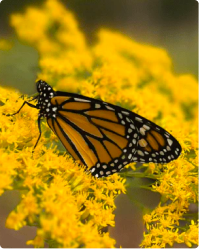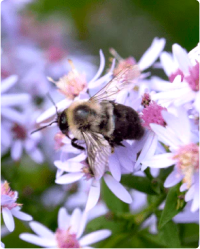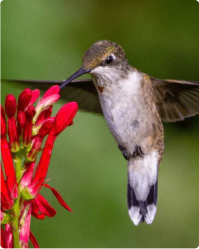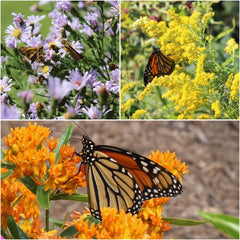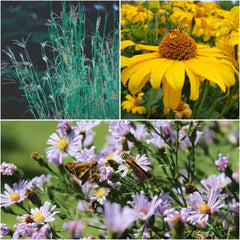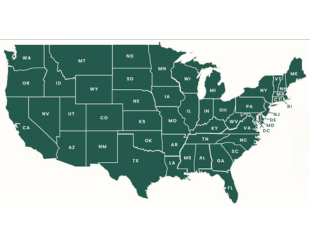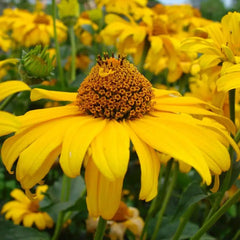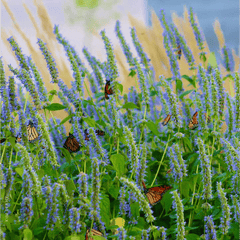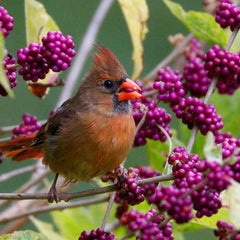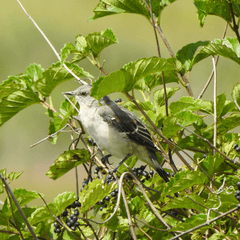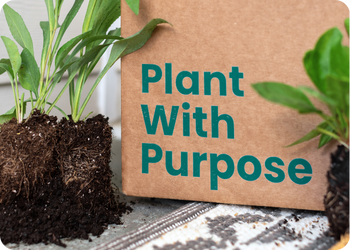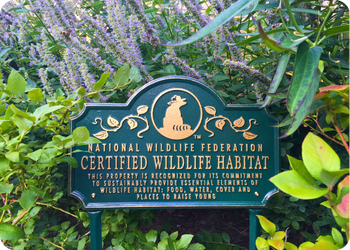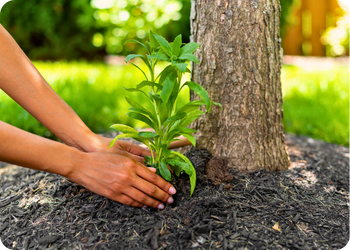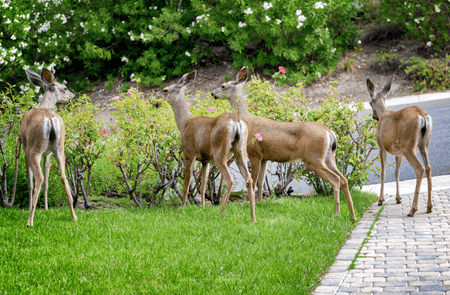Native Plants Are For The Birds

More than 800 bird species live in the United States. Some are here all year, and some stop through on their migratory routes. Dozens are listed on the U.S. endangered species list, facing threats such as habitat loss, pollution, and invasive species.
What can birds tell us?
Aside from their eminent beauty, birds are integral to the very survival of ecosystems across the globe. Society depends on birds for a variety of critical services they provide, from dispersing the seeds of native plants to controlling pests that harm forests and agriculture.
A member of the North American Bird Conservation Initiative, the organization that publishes the State of the Bird Reports sums it up nicely: “We know that birds are like the canary in the coal mine, right? Each bird is like its own measuring stick, telling us something about the ecosystem. When we put them all together, to paint a broader picture of what the ecosystems look like, birds really come out strong [in] a cost effective way as indicators of things that are important.”
State of the Birds Report & Wildlife Conservation Efforts
The 2022 State of the Birds Report underscores the urgent need for all who can to support U.S. birds, even at home. According to the report, North America has lost 3 billion breeding birds since 1970 — a loss of about1 in 4 birds. The report found that destabilizing ecosystems, extreme weather events, and anthropogenic effects have contributed to drastic declines in nearly every bird habitat across America.
The one bright spot in the report, thriving waterbirds and ducks, highlights how laws like the Pittman-Robertson Wildlife Restoration Act and North American Wetlands Conservation Act can make a difference.
The National Wildlife Federation is urging Congress to pass the Recovering America’s Wildlife Act to apply the lessons learned from duck, geese, and other wetland species’ recoveries. It would be the most significant species-conservation legislation in half a century, investing $1.4 billion every year in state, territorial, and Tribal wildlife conservation efforts. Though Recovering America’s Wildlife Act (RAWA) did not pass in 2022, the National Wildlife Federation is committed to getting it across the finish line in this new congress.
How You Can Help Birds In Your Backyard
Attracting and supporting birds might be easier than you think! With a few simple steps, you’ll not only help our most recognizable backyard birds, you’ll be creating wildlife habitat for many species to use. Using native plants and eco-friendly gardening practices can give wildlife food, water, cover, and places to raise their young.
#1 PLANT NATIVE PLANTS AND TREES
To survive, native birds need native plants, trees and the insects that have co-evolved with them. Many plants available in nurseries are not native, but exotic, ornamental or invasive species. With 96% of all terrestrial bird species in North America feeding insects to their young, native plants and trees are necessary for their survival. Planting native will not only help birds, but also pollinating insects such as bees and butterflies, along with amphibians, reptiles and small mammals.
National Wildlife Federation Naturalist and author of Attracting Birds, Butterflies, and Other Backyard Wildlife, David Mizejewski leverages research by University of Delaware Wildlife Ecologist Doug Tallamy: “For example, in order to raise one nest of young over the course of a 16-day nesting event, it takes one family of chickadees between 6,000 and 9,000 caterpillars. That’s just to bring one brood of babies to the point of fledgling.”
“Literally one plant choice in my yard could make all the difference for that particular family of chickadees. So, what does this mean?” Mizejewski asks. “Well, forget about the bird feeders.” They’re good for supplemental feeding, but installing diverse, native plant communities—including multiple caterpillar host plants—is better. That’s how you’re going to attract, feed, and support bird populations.
Over time, native plants require less water and maintenance. It’s a win-win: when you landscape with native species, you can spend more time with the birds and less time with the mower. By planting native plants and trees, you’re also contributing to the health and function of your local ecosystem.
#2 PROVIDE WATER
A simple birdbath is a great start. Change water every 2-3 days in summer and use a heater in the winter. Place the water sources at least 10 feet from dense shrubs or other cover that predators may use.
#3 GO ORGANIC OUTSIDE
Using products that kill insects can ALSO harm birds and wildlife. Insects are not the enemy! In fact, they can be key in keeping populations of pests down. By planting native plants you attract populations of insects such as ladybugs and other carnivorous beetles, dragonflies, parasitic wasps, and praying mantises that can help keep the balance. Creating a diversely planted garden that attracts an array of wildlife is a much better way to control pests than spraying toxic pesticides.
Not only do chemicals remove our bird’s main food source (insects!) they also come with a climate-harming price tag. Synthetic nitrogen fertilizers and chemical pesticides are made by burning fossil fuels which put carbon pollution into the air. These fertilizers not only pollute our water and threaten wildlife habitat, but can contribute to air pollution. Your new native plants won’t need added fertilizer, so you can easily implement organic gardening practices.
In addition, scientists are working on innovative solutions to solve the problem of mosquito control in recent years.
#4 LEAVE THE LEAVES, TREES, BRUSH PILES
Dead trees provide cavity-dwelling birds with places to raise young and collect insects for food. Many species will also seek shelter from bad weather inside these hollowed out trees.
Throughout the fall and winter, birds search fallen leaves, branches, brush piles and more looking for food. You can help by building a brush pile if you have space. Start with larger logs and top with smaller branches. Some birds will even hunt and roost or even nest in brush piles.
Native Plants To Attract Birds
There are so many beautiful and effective native plant choices to support birds, regardless of where you live. You can shop native plants by state, or by your zip code. The National Wildlife Federation’s Native Plant Finder is also a great resource for identifying plants native to your area.
Summer Songbird Native Plant Collection
The colorful blooms of the flowers in our Summer Songbird collection turn into seed heads in the fall that attract and serve songbirds. This collections includes three native perennial plants for sun/part-shade.
In the northeast, you’ll receive:
- Purple Coneflower (Echinacea purpurea)
- Oxeye Sunflower (Heliopsis helianthoides)
- Smooth Blue Aster (Symphyotrichum laeve, Aster laevis)
Hummingbird Heroes Native Plant Collection
Hummingbirds are attracted to nectar-producing flowers native to the bird's range, like coral honeysuckle, bee balm, buckeye, and cardinal flower.
Many of the plants they naturally feed on have red or orange blooms. Most hummingbird feeders are red to mimic the native plants they naturally feed on. They use their thin beaks and long tongues to drink nectar from flowers.
- Eastern Columbine (Aquilegia canadensis)
- Great Blue Lobelia (Lobelia siphilitica)
- Swamp Milkweed (Asclepias incarnata)
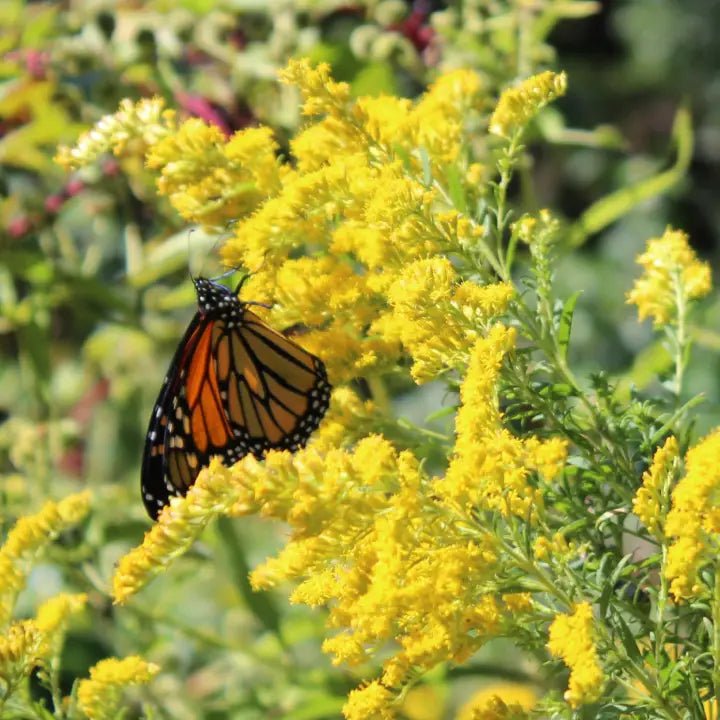
Find Native Plants by Zip Code
We took the guesswork out of planting native. Check your zip to see what ships!
